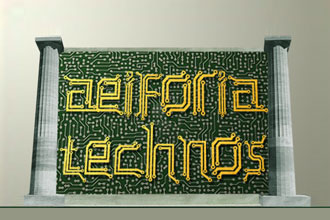Top Ten Reasons for Engaging Companies in Sustainability Solutions
 By now most companies see the real need to incorporate sustainability into their company’s core mission and ingrain it in corporate values. Unfortunately they don’t quite understand the why and the how, but that landscape is rapidly changing and the partnerships being developed to move this forward are solidifying fast.
By now most companies see the real need to incorporate sustainability into their company’s core mission and ingrain it in corporate values. Unfortunately they don’t quite understand the why and the how, but that landscape is rapidly changing and the partnerships being developed to move this forward are solidifying fast.
If you are in the Information Communications Industry (ICT) and haven’t tracked this yet as a way to grow business then here are ten reasons why, like corporations, the ICT industry might want to redefine how it approaches sustainability.
Other than touting some kind of sustainability PR initiative like a badge of honor because of the feel good nature of sustainability or in the attempt to “green-wash” a product or process, bringing in sustainability experts as staff and partners help to align corporate goals with also working to increase profits and reduce a company’s carbon footprint.
I have written about many of these in-depth separately in previous articles in this space and wanted to consolidate them. Here is what I consider the ten reasons why the ICT industry needs to redefine their approach to sustainability.
1. Lower Operating Costs
Sustainability drives profitability. In today’s economic climate, this realignment of profitability metrics in corporations is usually at the top of the list in how companies operate. It has been proven through tested methods by top companies such as Wal-Mart, Apple, Google and others that prescribing sustainable initiatives to existing and new programs and operations will increase the profit margin. For example, a major hotel chain recently posted a savings of $30,000 a month at two flagship hotels by micromanaging peak power. This includes programs such as using uninterruptable power supplies in their data center allowing them to even rent back spare power to the utilities as a profit center. The ICT industry has the products and capability to be that partner to provide solutions to increase profitability but often we don’t talk about them or just even use them in our systems designs.
2. Increased Balance Sheet Revenue
Companies, especially ones that own rentable property, have found that they can get increased revenues if their buildings are designed with sustainability in mind. A recent study by CBRE found that green buildings commanded 18 percent higher rents ($2.42 per square foot versus $2.02 per square foot) and higher occupancy rates (88.3 percent vs. 84.3 percent) than conventional buildings. Additionally, national mall owners, Simon Malls and Westgate Malls have found similar increases in occupancy rates and rents. This doesn’t just applied to office or retail space but to manufacturing, healthcare, and even higher education where individual sectors are being tasked with paying their way within their own environment. A big push in higher education is to have different academic units pay for their used resources with the University acting as landlord. Each department is looking for ways to reduce energy consumption as a way to minimize these costs to the department which translates into lower tuition rates for the students. The ICT industry plays a significant role in this by providing technology rich classrooms and office spaces that are low-energy consumers and smart, knowing when to shut down without human interaction.
3. Raised Capital Value and ROI
Tying into increased revenue is the higher capital value expected with a building designed and operated with sustainability in mind. In real estate, higher rents and lower turnover rates translate directly into higher capital values that can average 10.9 percent for new buildings and 6.9 percent for older ones. It also helps users control tenant utility bills. Additionally, these buildings are more in demand in the real estate market especially if built-in smart building provided by the ICT industry are there and ready to use.
4. Leveraging Broadband Infrastructure
Let’s face it; the communications network is rapidly aging and ever expanding. ICT investments in communications technology for our clients will have significant payback as capacity continues to grow through infrastructure. With 4K content on the horizon, fat backbones and unified networks that tie in utilities and data will be the way of the future and it is already happening. Tennessee based municipal utility EPB recently upgraded its smart grid to increase electrical efficiency. As part of this upgrade a 1-gigabit fiber optic network extending to more than 172,000 homes and businesses in its region. EPB was able to leverage its investments and construction costs by building one network for both grid and internet traffic. This groundbreaking communications project provided local residents, along with businesses like Volkswagen and Amazon, with some of the fastest internet service in the country. Having ICT technology systems designed and installed that are capable of handling that bandwidth will be vital to the success of these customers and continue to prove out savings on utilities and infrastructure.
5. Brand and Identity
The millennial generation is driving a revolution towards sustainability causing sustainable brands outperform their peers by 120 percent. A vast majority of retailers large and small have indicated that sustainability has strengthened their brand. The key is truth in advertising where green-washing is getting flushed out pretty quickly. By showcasing their brand through digital media and leveraging the connected user’s desire for information, a corporation with ICT support can increase their brand awareness in a positive direction.
6. Customer Satisfaction and Engagement
Recent studies have shown that projects that retrofit their public space areas with energy efficient solid state lighting have patrons that linger longer and potentially buy more. Control of this lighting also has been shown to make a significant impact in retaining patrons longer, not to mention more savings as solid-state lighting and lighting networking can cut light power consumption by 70 percent to 90 percent. Additionally, as consumers continue to employ greater energy efficient lighting schemes in their homes, they are coming to expect it where they work, shop and play. Additionally, engaging the consumer with what is being done sustainably within the environment they are in helps build confidence and satisfaction in the products they buy by transferring the social construct of doing good things for the environment to the end user.
7. Recruiting and Retention
The Millennials have it! Today’s tech savvy young worker will rank an employer’s reputation as an important draw for a job opportunity. Corporations are taking notice especially since it produces better retention, and higher output due to better satisfaction. Working in the ICT world, we have a bevy of tools at our disposal to guide our corporate friends into systems that help them attract and retain top talent. It is not unusual for the younger generation to grill a prospective employer about their sustainability efforts and in a few short years, this generation will constitute 75 percent of the working population.
8. Health, Happiness and Wellness
As we have moved away from an agrarian society and into being a service society we have moved indoors. Workplace and building design can have a direct impact on employee motivation, satisfaction and productivity. When people feel like they have control over their environment and it won’t make them sick or tired, they just get more done and the data shows this over and over. If you’re not stressing about how an environment function or feel like you have some control over it, you’re going to get more done. This benefit is challenging to quantify, but compelling anecdotal evidence suggest that there is something to this. For example, being able to efficiently and minimally control technology in a meeting reduces stress. Having that system be intuitive enough to turn off when you are done also relieves the user of additional stress of remembering if they left the projector on all night. The side effect is a reduction in energy bill through smart building design.
9. Data Center Optimization
The corporate mindset trend is toward cloud everything, CTOs and data center managers are some of the biggest believers in sustainability as financial responsibility has now landed on their desk. Electricity can consume up to 30 percent of the operating budget of a company so these individuals look to pinch every penny they can. Google claims it has saved more than $1 billion through its energy efficiency measures in its data centers and Apple, Amazon, and Microsoft are all close behind. Specific ICT measures that can be taken in a data center environment include designing for energy efficiency which can free up floor space and reduce real estate costs. Additionally, lowering wasted heat extends equipment lifetime and reduces failures while also reducing necessary HVAC loads. Smart and sustainable power generation and power backup solutions increase the data center’s value and operating costs. Companies take this to the desk with solutions such as like flash memory storage systems that work to even further reduce power consumption while letting companies get more work done with fewer machines.
10. The Environment
For all but a few naysayers, climate change is real and significantly getting worse. Politics aside, we all want to grow, create, and succeed in business but if the air and water is too polluted, natural resources are wasted and tossed, and the ground we walk on destroyed, then the best business, product or service has no chance of succeeding. The ICT industry has plenty to contribute to a better, cleaner world if you only engage your clients who already have seen this and are looking for those partners to help them.
There are certainly many more to add to this list. What are some the strategies, results, and benefits you’ve seen? How have you worked with your clients to move the ball forward?





